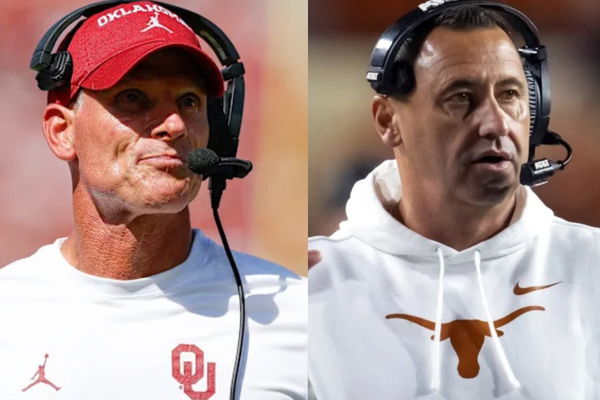

The move to the SEC was supposed to be a game changer for Texas and Oklahoma. But when it comes to revenue, it’s been more of a lateral move, at least for now. While HCs Brent Venables and Steve Sarkisian may have benefited from their early exit from the Big 12 last July, the financial reality of their transition to the SEC has left the Sooners and Longhorns playing catch-up. And this all became clear with the SEC’s revenue distribution announcement.
According to a new report by SEC Sports on February 7, SEC Commissioner Greg Sankey announced Thursday a revenue distribution of $808.4 million to the conference’s 16 schools for the 2023-24 fiscal year, which came to an end on August 31, 2024. The total stems from a direct distribution of $790.7 million from the conference office plus an extra $17.7 million retained by the universities that took part in the 2023-24 football bowl games. This means that each SEC school with a full year participation is getting an average of $52.5 million. But for Texas and Oklahoma? Not so much.

via Imago
Oct 19, 2024; Austin, Texas, USA; Texas Longhorns head coach Steve Sarkisian and corner back Jahdae Barron (7) react after a pass interference call in the third quarter against the Georgia Bulldogs at Darrell K Royal-Texas Memorial Stadium. Mandatory Credit: Brett Patzke-Imagn Images
Per the report, “The University of Oklahoma and the University of Texas, which joined the conference on July 1, 2024, each received $27.5 million resulting from transition payments derived from a combination of television agreements and refundable application fees remitted to the Conference in a prior fiscal year.” This discrepancy stems from their early exit from the Big 12 last year.
ADVERTISEMENT
Article continues below this ad
In 2024, the Big 12 distributed a record-high $470 million to 14 schools, per conference commissioner Brett Yormark. However, the revenue for the 10 original programs was diluted with schools like Cincinnati, Houston, UCF, and BYU joining the conference. These programs received $18 million in partial shares. As for the original members, they received an average of $39.8 million. But the Sooners and Longhorns that were set to leave for the SEC in the summer received full shares for a combined $100 million.
This is the reason why they received $25 million less than the other SEC teams with just $27.5 million, which is a $72.5 million hit from last year’s revenue-sharing totals.
ADVERTISEMENT
Article continues below this ad
SEC’s financial outlook is still strong
The SEC is the first Power Four conference to release its tax records for fiscal year 2024. According to a new tax report, the SEC witnessed about a 1.5% decline in fiscal 2024 in total revenue compared to nearly $853 million in 2023. However, the long-term trajectory remains promising. With the addition of UT and OU, ESPN/ABC taking over the Saturday football TV deals, and the new 12-team playoff format, the SEC is on track to reach $1 to $1.1 billion in revenue in the near future.
Texas and Oklahoma athletic department officials broke down their revenue to USA TODAY Sports, revealing $15 million in application fees and $12.5 million in transition payments. The SEC said in a statement, “Specifically, for the current year tax return, the conference paid out two amounts to member schools that were recognized as revenue in prior years but shown as expenses in the current year tax return.” Expenses shot from $823 million to $899 million with regard to the distributions to the schools.
ADVERTISEMENT
Article continues below this ad
What’s your perspective on:
Did Texas and Oklahoma jump the gun by joining the SEC, or is this just a temporary setback?
Have an interesting take?
While the financial transition has been rocky, there’s a light at the end of the tunnel for Oklahoma and Texas. The two programs won’t receive full shares from the SEC’s primary revenue-sharing pool until the 2025-26 fiscal year.
ADVERTISEMENT
ADVERTISEMENT
ADVERTISEMENT
ADVERTISEMENT


Did Texas and Oklahoma jump the gun by joining the SEC, or is this just a temporary setback?